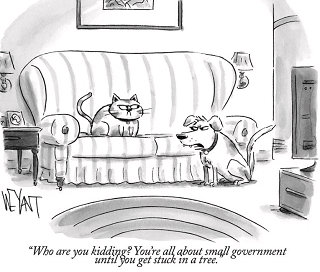California’s Low Carbon Fuel Standard

The technology under discussion converts cow waste into biomethane, which is then sold into the transportation market as part of California’s Low Carbon Fuel Standard (LCFS).
As discussed in the tutorial linked above, LCFS is a:
“fuel-neutral, market based program to develop alternative fuels markets and reduce GHG emissions attributed to transportation fuels used in California. California’s Low Carbon Fuel Standard is one of a group of programs designed to reduce greenhouse gas (GHG) emissions enacted through AB 32, the 2006 Global Warming Solutions Act, signed in to law by Governor Arnold Schwarzenegger. The LCFS applies to fuels used for transportation, including gasoline, diesel and their alternatives. The goal of the LCFS is to reduce the carbon intensity (CI) of the transportation fuel pool by 10% by 2020. The LCFS is administered by the California Air Resources Board (CARB). The LCFS was originally adopted in 2009 and became effective in 2011 with a goal of reducing CI by 10% in 2010. The original CI reduction schedule was stayed by the California Appellate Court at 2013 levels due to deficiencies in the original LCFS adoption process. The LCFS was re-adopted in 2015 to remedy the deficiencies and update the program provisions. The re-adopted LCFS became effective on January 1, 2016.”
Like it or not, a great number of these projects are driven by government regulation. California is home to 5.2 million of the country’s 99.3 million cows, and the effluent is causing a great number of different problems, including the release of methane into the atmosphere, a greenhouse gas 28 – 36 times more potent that CO2 over 100 years.
The state government is among the world’s most aggressive in making laws that protect all living things from man-made pollution, and most of the nearly 40 million people who live here think that’s a good thing.

Craig,
Every day I receive funding requests for this sort of ill-conceived projects. A high percentage always include reference to some equally ill-considered government backed scheme or incentive.
I’m not opposed to government incentives per se, government should provide initiatives in their capacity as economic managers, but the project should be practical and useful.
Bovine effluent already has a valuable use, as fertilizer !
Yes, it’s possible to create fuel from effluent, but why bother? The tiny amount fuel produced isn’t worth the effort in comparison to other far more practical, and valuable ways to recycle cow dung.
The problem here is you make an unsubstantiated and inaccurate assumption ie; “the (bovine) effluent is causing a great number of different problems”, and proceed on the basis of that assumption.
In reality, nature and evolution sorted the problem of cow effluent out hundreds of thousands of years ago by creating a symbiotic relationship between pasture and cow dung ! (incidentally, before all those cows, vast herds of Bison roamed America, producing far more of everything (a Bison
I’m curious, what attracts you to these highly dubious, impractical and often pointlessly disruptive technologies? What attracts you to support “solutions in search of problems”, as opposed to supporting, less exciting, but more practical clean(er) technologies ?
would this way of producing energy work like coal power or would the process be different? If so what does the process consist of?
Hi Susan,
I’m not sure to whom your question is directed.
The latest clean(er) coal technologies currently being developed and introduced primarily seeks to eliminate harmful emissions processing those and emissions into a wide range of environmentally beneficial products.
The potential of these clean(er) advances in technology may render coal fired power generation 2 or even 3 times more environmentally beneficial than wind or solar.
Naturally, such developments are extremely alarming for huge corporations manufacturing and turbines and solar panels.
Understandably, these powerful industries, and their lobbyists, are spending vast sums trying to suppress clean(er) coal technology. Information is emerging about a growing number of concerns regarding the effectiveness of Wind/solar, while similar concerns regarding the true value of these industries environmental and economic credentials are growing in number.